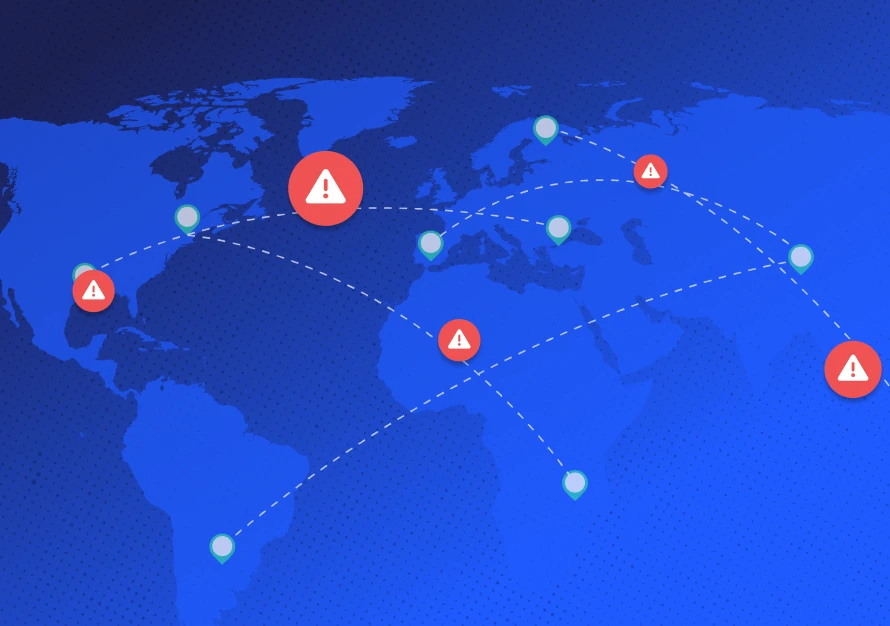No matter which country you’re in, there are sure to be a handful of high-risk industries that keep the economy going. To get a better understanding of how that applies to the Canadian job market, Avetta dove into the data. We ranked the top 10 most dangerous jobs in Canada according to total lost time claims (injuries and illnesses but not fatalities).
To get an accurate ranking, we evaluated the most dangerous industries in Canada from 2017-2019. We took the number of each industry’s total lost time claims and divided it by the total number of workers in that industry.
We then discuss the most dangerous jobs within those industries, why the industry is so dangerous, and what safety regulations Canada has in place to protect workers.
Finally, we talk a bit about how the COVID-19 pandemic changed the ranking of some of Canada’s industries in 2020 and how Avetta can help protect your industry’s supply chain.
10. Mining, Quarrying and Oil & Gas Extraction
You may think this industry would place much higher on the list of most dangerous jobs in Canada. The fact it comes in at number 10 attests to the high level of safety adherence these industries apply to their everyday work.
These are some of the most dangerous jobs within these industries:
- Mining machine operation
- Underground mining
- Offshore deck operations
- Offshore drilling
Here are the Canadian safety regulations and guidelines for mining, quarrying and oil and gas extraction:
9. Accommodation and Foodservice
This industry may not seem too dangerous at first thought, but the high occurrence of open wounds, burns and hepatitis gives it a place on the top 10 list.
These are some of the most dangerous jobs within these industries:
- Hotel work (cleaning)
- Food preparation
- Food safety and inspection
- Delivery driving
- Offshore accommodations
Here are the Canadian safety regulations and guidelines for accommodation and food service:
- CCOHS Sanitation and Infection Control for Cleaning Staff
- Foodservice Workers Safety Guide
- Workplace Safety in the Foodservice Industry
8. Administrative and Support, Waste Management and Remediation Services
Using heavy equipment, handling hazardous materials and experiencing road accidents all contribute to perilous conditions for these workers.
These are some of the most dangerous jobs within these industries:
- Refuse and recyclable material collection
- Water and wastewater treatment plant and system operation
Here are the Canadian safety regulations and guidelines for waste management:
- CCOHS How to Work Safely With - Toxic Materials
- Government of Canada Management of Hazardous Waste and Hazardous Recyclable Material
- CUPE Wastewater Treatment Plant Occupational Health and Safety Bulletin
7. Other Services (Except Public Administration)
Employees in other services—a catch-all category that includes a variety of occupations that don’t fit neatly into existing categorisations—mostly suffer from traumatic injuries to their bones, nerves, spinal cord, muscles, ligaments and tendons.
These are some of the most dangerous jobs in this industry:
- Religious administration and promotion
- Advocacy
- Dry cleaning and laundry services
- Death care
- Pet care
Here are the Canadian safety regulations and guidelines for other services:
- Government of Canada Compliance Information for Dry Cleaning Owners and Operators: Tetrachloroethylene (PERC) Regulations
- NCCEH Death Care During the COVID-19 Pandemic: Understanding the Public Health Risks
- CCAC CCPA Provincial Information
6. Public Administration
Though it’s typically a “desk job,” working in public administration comes with its own challenges. Mental disorders and syndromes among these employees are common. Surprisingly, traumatic injuries to bones, nerves and the spinal cord also happen.
These are some of the most dangerous jobs in the industry:
- Veterans health administration
- Customs and border patrol
- Military
- Canadian Air Transport Security Authority (CATSA)
Here are the Canadian safety regulations and guidelines for public administration:
- Canadian Armed Forces Medical Standards
- Government of Canada Flight Safety
- CATSA ACSTA Measures Taken in Response to COVID-19
5. Manufacturing
Environmental conditions, hard labor, and repetitive movements affect worker health and safety. Common injuries are surface wounds and open wounds, burns and intracranial trauma (brain injury). Often not considered or realized, manufacturers also regularly get diagnosed with digestive diseases and disorders.
These are some of the most dangerous jobs within the industry:
- Industrial truck operations
- Fabricating
- Packaging
- Plastics and rubber production
- Industrial chemical production
Here are the Canadian safety regulations and guidelines for manufacturing:
- CCOHS Inspection Checklists - Sample Checklist for Manufacturing Facilities
- Public Safety Canada Guidance on Essential Services and Functions in Canada During the COVID-19 Pandemic
4. Healthcare and Social Assistance
Daily person-to-person contact and biological exposure are real threats to the health of employees in this industry. Additionally, surface wounds, intracranial injuries, musculoskeletal pain and mental disorders or syndromes occur frequently.
These are some of the most dangerous jobs within these industries:
- Nursing
- Paramedic services
- Correctional medicine
- In-patient psychiatry
Here are the Canadian safety regulations and guidelines for healthcare and social assistance:
- CCOHS Violence Against Health Care Workers - It’s Not “Part of the Job”
- CCOHS Mental Health
- CPSI ICSP Creating a Safe Space: Psychological Safety of Healthcare Workers (Peer to Peer Support and Other Support Models)
3. Transportation and Warehousing
The long, hard, lonely hours make transportation and warehouse workers prone to dealing with exhaustion, mental disorders or syndromes and road accidents.
These are some of the most dangerous jobs within these industries:
- Oil field driving
- Bus and truck mechanics
- Diesel engine maintenance
- Long-haul trucking
- Material moving
Here are the Canadian safety regulations and guidelines for transportation and warehousing:
- CCOHS Transportation of Dangerous Goods (TDG) - Overview
- Canadian Nuclear Safety Commission Transport FAQs on Used Nuclear Fuel
2. Construction
Long known to be a dangerous trade, construction work requires the use of heavy equipment and power tools every day. Other risks workers in this field deal with include slipping, falling from heights, getting heat stroke and having caught-in or struck-by accidents. Canadian workers may also find themselves confronted by large animals (bear, moose, etc.).
These are some of the most dangerous jobs within these industries:
- Sewer and duct construction
- Demolition
- High-rise construction
- Concrete work
- Crane operations
- Roofing
- Structural iron and steel framing
- Electrical
- Welding
Here are the Canadian safety regulations and guidelines for construction:
- Careers in Construction Safety Standards
- Ontario Ministry of Labour, Training and Skills Development: Construction
- CCOHS Construction Worker - General
1. Agriculture, Forestry and Fishing and Hunting
For the top spot, the risks of this industry include heavy equipment, dangerous animals, falling trees and an inherently dangerous natural environment. Drownings and traumatic injuries happen but the biggest danger is nervous system and sense organ diseases.
These are some of the most dangerous jobs within these industries:
- Industrial tractor operation
- Livestock management
- Commercial fishing
- Logging
Here are the Canadian safety regulations and guidelines for agriculture, forestry and fishing and hunting:
- Canadian Agricultural Safety Association
- Memorial University’s The Forest Professional
- WorkSafeBC OHS Regulation Part 26: Forestry Operations and Similar Activities
- Government of Canada Fishing Vessel Safety Regulations
- Government of Canada Small Fishing Vessel Safety
- Government of Canada Marine Transportation
The Most Dangerous Jobs in Canada During COVID-19
The worldwide COVID-19 pandemic that began in 2020 has made an impact on the statistics regarding the most dangerous jobs in Canada.
UNI recently named long-term care work as the most dangerous job in Canada, the US, Australia, Ireland and the UK. From March 2020 to March 2021, hundreds of thousands of Canadian long-term care workers contracted COVID-19 and at least 25 died as a result.
Monitor and Optimise Your Global Supply Chain
Avetta understands the risks you and your workers deal with every day. With our help, you can transform your supply chain network through transparency, risk management and trust. When workplaces use the Avetta Platform, they find the number of safety incidents is reduced by as much as 55% compared to industry averages.

.svg)

.svg)
.svg)

.svg)

.svg)
.webp)







